CES 2016: 10 Products That Brought IoT To The Next Level
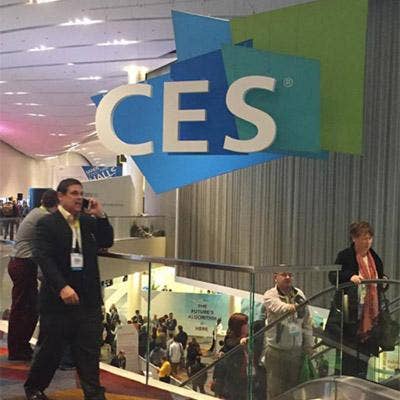
A 'New Era Of Consumer Technology'
While the Consumer Electronics Show is a well-known showcase for vendors' newest mobile hardware and gadgets, it was the Internet of Things that stole the show at this year's conference, which took place last week in Las Vegas.
Intel CEO Brian Krzanich summed up the show during his CES keynote, shying away from discussing PCs and hardware and instead focusing on wearables, connected devices and IoT end user experiences to foster what he called the "new era of consumer technology."
The newfound focus on the Internet of Things was apparent on the CES show floor, as companies touted everything from smart connected shoes to IoT-connected medical kits for the health care vertical. Following are 10 IoT-related products that caught our eye this year at CES.
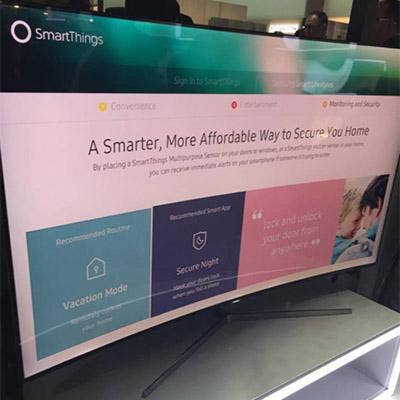
Samsung And Microsoft Announce IoT Collaboration
During Samsung's CES keynote, someone made an unexpected appearance on stage -- Microsoft's executive vice president of the company's Windows and Devices Group, Terry Myerson.
Microsoft and Samsung, traditionally rivals in the computing space, unveiled a new partnership that will integrate Samsung devices and software with Windows 10 devices, as well as tackle upcoming challenges the industry may face with the Internet of Things. This means that users can monitor and control refrigerators, washing machines and other appliances using apps that run on Windows 10.
The outlined partnership would integrate Microsoft's Windows 10 with Samsung IoT-ready appliances so the two can work together with better openness and collaboration.
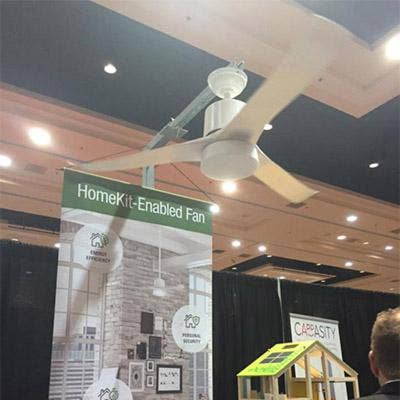
HomeKit-Enabled IoT Fan
On a hot summer day, homeowners want to walk into a refreshingly cool house, but don't want to waste energy by leaving their fans on for hours while they are gone.
Hunter Fan addresses this problem with an Internet of Things-connected smart fan that users can turn on or off remotely, so they can start up the fan a few minutes before they arrive at home.
Hunter Fan coupled Ayla Networks IoT technology to help homeowners check on, program and control fans wirelessly using their iOS device or a mobile app from their Android device.
The Wi-Fi-enabled fans, available in the spring for $329, support Apple's HomeKit technology, so they can also interact with other HomeKit-enabled products in the household.
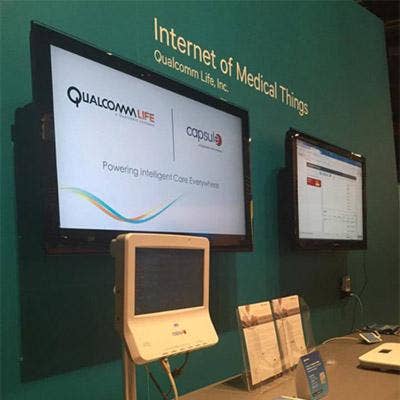
Qualcomm's Internet Of Medical Things
Qualcomm showed off an array of IoT products at CES, including some geared toward the health-care vertical, in what it called the "Internet of Medical Things."
The company's medical IoT lineup includes diagnostics and therapeutics, as well as biometrics and physiological monitors. Qualcomm has funneled investment into medical IoT devices over the past year -- in September, the company announced it has acquired Capsule Tech, which helps health-care facilities collect and process data coming from medical devices.
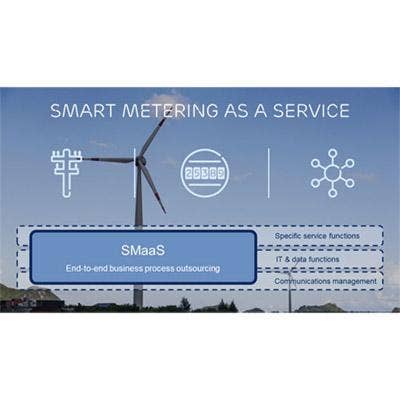
Ericsson IoT Solutions Unveiled At CES
Ericsson introduced three new Internet of Things products, including a smart metering-as-a-service product that enables utility companies to offer "smart" services to consumers. Ericsson also lifted the curtain on a User And IoT Data Analytics service that allows controlled access and exposure of data from cellular and non-cellular devices, as well as creating value through cross-industry offerings. Both products will be available in the second quarter of 2016, according to Ericsson.
Finally, the company showed off new network software for "massive IoT," which supports millions of IoT devices in one cell site for applications such as metering and sensor monitoring. According to Ericsson, this new software, which will become commercially available in the four quarter of 2016, will facilitate in removing the roadblocks to IoT mass-market adoption.

An Internet of Things-Enabled … Dress?
Intel put its IoT-focused Curie Module to use in a somewhat strange way -- the "adrenaline dress," showed off on the CES show floor.
This dress features a 3-D-printed carbon-fiber design on the back that can expand or contract, similar to butterfly wings, based on the wearer's adrenaline, stress or body temperature. The "adrenaline dress" is designed to mimic the fight-or-flight response of animals. While the idea of an IoT-powered dress may seem strange, Intel argued that the garment showed off a creativity application for the Internet of Things.
Intel's Curie module features Bluetooth Low Energy and a 6-axis combo sensor that includes accelerometers and gyroscopes. The module is set to arrive in the first quarter of 2016, according to Intel.
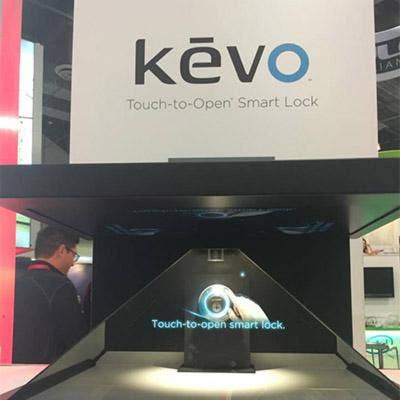
Kevo Smart Lock
Kwikset's Kevo Smart Lock -- on display at CES -- turns users' smartphones into portable keys for their homes.
This Internet of Things-connected lock, available for $185, connects to a companion mobile app on iOS and Android devices. From the app, users can set up and delete eKeys, which are encrypted electronics keys residing on the smartphones that unlock Kevo. Users can also send their eKeys to other users temporarily that they would like to grant access to.
Kwikset has also paid close attention to security amidst IoT security concerns -- Kevo tracks user activity in its system, so users know when eKeys have been locked, unlocked, sent out or accepted.
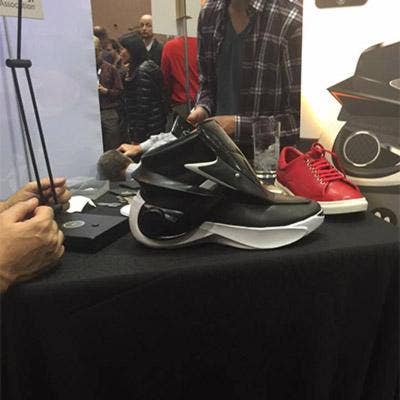
Digitsole SmartShoe
If you are looking for a shoe that tightens automatically around your foot, laces itself up and even warms your foot, the Digitsole SmartShoe is the perfect match.
Digitsole unveiled what it dubbed "the world's first intelligent footwear" product at CES. The designs of these shoes include heaters and sensors in the sole that are controlled by a companion app and come with a self-fastening mechanism, so users won't have to bend down to lace up their own shoes. In addition to self-lacing features, the SmartShoe can be controlled by the app to heat feet up to 100 degrees. The SmartShoe is a prototype, but will be available in the U.S. in September for $450.
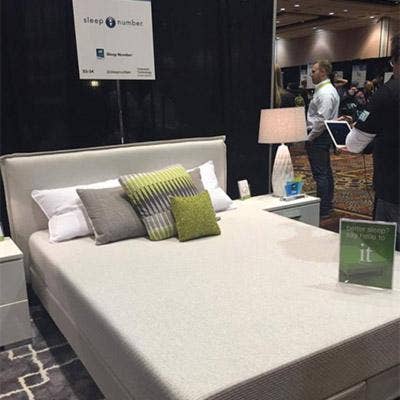
Sleep Number's It Bed
Sleep Number debuted its smart connected It Bed -- an IoT-enabled bed with biometric sensors that gather sleeping data, allowing it to track users' movements, heart rate, breathing and sleep status hundreds of times per second. This data will combine to generate a SleepIQ, so that users of the It Bed can check on how well they sleep.
But beyond that, the It Bed can also be connected to other smart devices throughout the house -- so that the thermostat can be changed to a temperature better suited for sleeping patterns, for instance. It Bed will come in six sizes, from twin to king, and will start at $1,000.
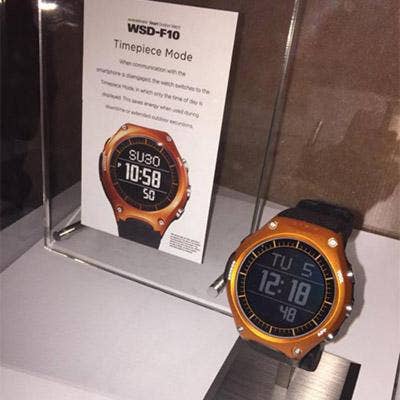
Connected Wearables Are Everywhere
Vendors like FitBit, Huawei, Samsung and Casio showed off their newest smartwatches, fitness trackers, and high-end connected bracelets. This year, wearable titans aimed to make a mark by showing off wearables with more functions, better premium design features and longer battery life.
For instance, electronics manufacturing company Casio took the wraps off its newest smartwatch for adventure junkies, the Smart Outdoor Watch, while Samsung announced two new editions of its Gear S2 classic wearable -- one encased in 18-karat rose gold and the other in platinum. On the medical IoT side, Omron Healthcare gave viewers a first look at its Project Zero wrist and upper arm blood pressure wearable monitors at CES. And Fitbit announced the Fitbit Blaze, a new wearable with a large, square screen that looks strikingly similar to the Apple Watch.
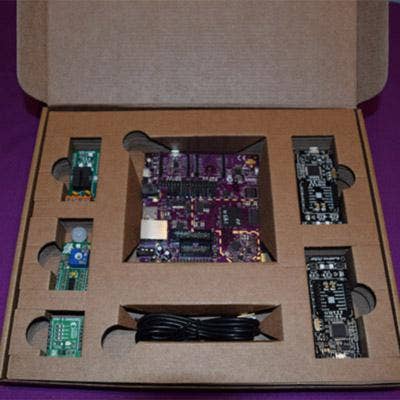
IoT Creator Kit
Imagination Technologies' Creator Kit is an IoT developer's kit aimed to support IoT end-to-end solutions. It does this through its own cloud infrastructure, powered by IBM's SoftLayer, and offers support for IPV6, Wi-Fi, Bluetooth and onboard memory.
The Creator Kit offers a viable alternative to the Rasberry Pi solution, a low-power, credit card-sized computer that can be plugged into televisions and PC keyboards and is ideal for embedded projects. Imagination Technologies' kit is being tested in a blueberry orchard in Spain, where it enables quality control tracking of soil and moisture.